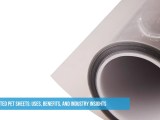
Titanium Dioxide Nanomaterials: Synthesis, Properties, Modifications, and Applications
August 13, 2025Titanium dioxide (Tio₂) nanomaterials are tiny particles with huge potential. They are used in everything from sunscreen to solar cells because of their unique properties. In this article, we’ll break down their synthesis, properties, modifications, and applications.
Synthesis of Tio₂ Nanomaterials
TiO₂ nanoparticles can be synthesized using various methods, each influencing their size, shape, and performance.
Common Synthesis Methods: –
Sol-Gel Method: Mixing titanium compounds in a liquid, forming a gel, then heating to get nanoparticles.
Hydrothermal/Solvothermal Method: Using high temperature and pressure in water or solvents to grow crystals.
Chemical Vapor Deposition (CVD): Gas-phase reactions to deposit TiO₂ on surfaces.
Microwave-Assisted Synthesis: Fast and energy-efficient method using microwave heating.
Green Synthesis: Using plant extracts or bacteria to make eco-friendly nanoparticles.
Key Properties of TiO₂ Nanomaterials
TiO₂ is special because of its:
High Photocatalytic Activity: Breaks down pollutants under light.
UV Absorption: Blocks harmful UV rays (used in sunscreens).
Chemical Stability: Doesn’t easily react or degrade.
High Refractive Index: Makes surfaces shiny and reflective.
Biocompatibility: Safe for medical and cosmetic uses.
Modifications to Improve TiO₂ Performance
Pure TiO₂ has some limitations, but scientists tweak it to make it better:
Doping: Adding metals (Ag, Fe) or non-metals (N, C) to enhance light absorption.
Surface Coating: Coating with silica or polymers to prevent clumping.
Hybrid Composites: Combining with graphene or carbon nanotubes for better electrical conductivity.
Morphology Control: Making nanotubes, nanowires, or mesoporous structures for specific uses.
Exciting Applications of TiO₂ Nanomaterials
Sunscreens & Cosmetics: Blocks UV rays while being gentle on skin.
Self-Cleaning Surfaces: Coated on windows and tiles to break down dirt using sunlight.
Solar Cells: Improves efficiency in dye-sensitized solar cells (DSSCs).
Water & Air Purification: Destroys pollutants and bacteria under light (photocatalysis).
Medical Uses: Antibacterial coatings, drug delivery, and cancer treatment.
Batteries & Sensors: Used in lithium-ion batteries and gas sensors for better performance.
Conclusion
TiO₂ nanomaterials are tiny but mighty! With their unique properties and numerous modifications, they play a significant role in technology, healthcare, and the environment. As research continues to grow, we can expect to see even more amazing uses for these nanoparticles in the future.


